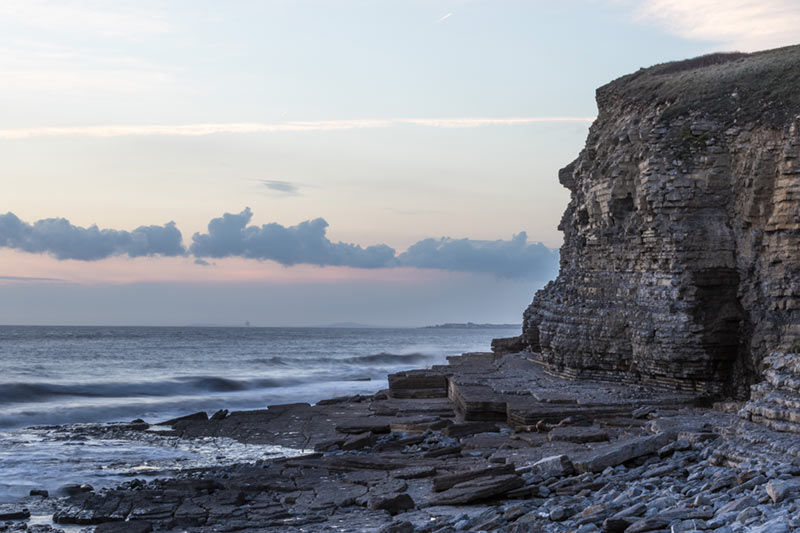Gwawr
From Planet 224
by Amanda Rackstraw
Inspired by landscape at Dunraven Bay,
Glamorgan on the Heritage Coast, south Wales
The first thing you notice is that her nose is cracked. A huge fissure has appeared which threatens, in time, to cause its crashing down. She could be a witch. Not in the chin meets nose cliché of fairy tales, but in the strong angular line of brow and nose that gives her face forward momentum. She’s emerged from Glamorgan rock defiant against westerly gales, her complexion exfoliated by lashing rain. You call her – no, she call herself – Gwawr.

Dunraven Bay © Mike Baker
Climb the headland, sit facing southwest, looking out over the Channel. Up here the turf is tough, streaked with strands that have bled all traces of colour. Slip your fingers through; you can feel her scalp. A pulse even.
Stay a while. Stay until human lives are as inconsequential as flotsam: in on the tide, away on the next.
Rocks remember. Some will show you 300 million years. So what is eleven centuries? A mere nail-paring to the gods. A little less cracking up of coastline. Denser forests; purer water; clearer air.
So clear this morning that as the mist lifts, the heads of pagan ships rise like dragons in the Channel. Gwawr’s skin smarts with the splash of glacial streams; her head swims with the first draught of fermented summer brew. Yet it’s not cold water or ale that’s the cause. It’s this. For she’s a young woman of Morgannwg, a Cymraes, as yet unmatched to any in her tref. She’s a blacksmith’s daughter. One of three, like the clover leaf her father has branded on her belt: equal in parts, from the same stem.
Sign in to read moreAbout the author
Amanda Rackstraw is a writer, performer and storyteller. Originally from Kent, she has lived in south Wales and walked its coastal paths for more than thirty years. This story is one of several poems and stories inspired by Dunraven Bay and the Heritage Coast. Her words are engraved on two pieces of public art by Howard Bowcott, to be installed at Dunraven Bay and nearby later this year. She teaches creative writing for Cardiff University. One of her poems appears in the autumn issue of Mslexia.

